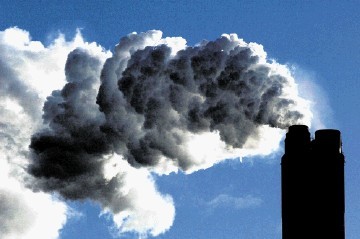
WORLDWIDE energy consumption will leap by 53% between 2008 and 2035 with India and China dominating sharply-increased demand, according to the US Department of Energy.
China alone, which only recently became the world’s top energy consumer, is projected to use 68% more energy than the US and hugely more than Europe by 2035. With strong economic growth in both countries over the projection period, their combined energy use will more than double.
Renewable energy is projected to be the fastest growing source of primary energy over the next 25 years, but fossil fuels will remain the dominant source of energy.
The department’s Energy Information Administration (EIA) says in its latest forecast that renewable energy consumption will rise by 2.85% annually and the renewables share of total energy use will increase from 10% in 2008 to 15% in 2035.
“Fossil fuels, however, continue to supply much of the energy used worldwide throughout the projection, and still account for 78% of world energy use in 2035,” says the report.
However, it warns that past experience suggests that renewable energy deployment is often significantly affected by policy changes.
Natural gas will lead fossil fuels growth, with consumption expected to climb 1.6% a year. Supplies of unconventional – shale gas, tight gas and coalbed methane – are expected to rise sharply.
As for oil consumption, this is expected to keep on growing with both conventional and unconventional liquid supplies used to meet rising demand. The barrel price for 2025 is expected to reach $125 by 2035.
However, this is a middle ground estimate. The EIA points out that projected petroleum consumption and prices are very sensitive to both supply and demand conditions. Higher economic growth in developing countries coupled with reduced supply from key exporting countries could lead to much higher barrel prices . . . perhaps $169 per barrel by 2020 and approaching $200 per barrel by 2035.
Conversely, lower economic growth in developing countries coupled with increased supplies from key exporting countries may see “real oil prices” fall to about $55 per barrel in 2015 and then gradually decline to $50 per barrel after 2030 where they remain until 2035.
Total world petroleum and other liquids fuel use is set to increase by 26.9million barrels per day between 2008 and 2035, but the growth in conventional crude oil production is likely to be less than half this amount . . . about 11.5million bpd, while production of natural gas plant liquids may rise 5.1million bpd.
World production of unconventional resources (including biofuels, oil sands, extra-heavy oil, coal-to-liquids, and gas-to-liquids), which totalled 3.9million bpd in 2008 is set to jump more than threefold to 13.1million.
Petroleum and other liquid fuels are set to remain the largest energy source worldwide until 2035, though projected higher oil prices are expected to erode their share of total energy use from 34% in 2008 to 29% in 2035.
World coal consumption is likely to rise dramatically . . . by about 50% over the reference period.
China alone may account for 76% of the projected net increase.
Electricity is seen as the world’s fastest-growing form of end-use energy consumption.
Net electricity generation worldwide is forecast to rise by 2.3% a year on average, with renewables adjudged the fastest-growing source of future power.
Recommended for you
